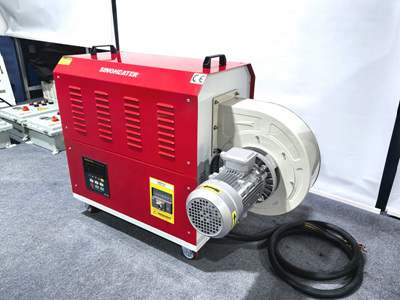The calibration methods for the temperature sensor of the hot air blower mainly include the following types. The appropriate method can be selected based on actual needs and accuracy requirements:
First, the comparative method
Principle: The deviation is determined by comparing the measured value of the sensor to be calibrated with that of the standard sensor.
Step:
Preparatory work: Select a standard temperature sensor (such as a 2-level platinum resistance) that is more accurate than the sensor to be calibrated and in good condition.
Test environment: Place the two sensors at the same ambient temperature and keep them in a thermostat to ensure a stable temperature.
Data recording: Read and record the measurement values of standard sensors and sensors to be calibrated.
Deviation analysis: Compare two data points, calculate the measurement deviation of the sensor to be calibrated, and make adjustments.
Second, the water bath method
Principle: Calibration is carried out by taking advantage of the uniformity of liquid temperature, and it is usually used when high precision is required.
Step:
Prepare the tools: Prepare a standard calibration thermometer and a stable water bath device.
Immerse in the water bath: Place the standard thermometer and the sensor to be calibrated simultaneously into the water bath, ensuring they are fully immersed and close to the central area of the water bath container.
Temperature stability: Wait for the water bath temperature to reach a stable state to avoid temperature fluctuations caused by agitation or interference.
Third, calibration of the collection form
Principle: Use a high-precision data acquisition meter to read the resistance or voltage value output by the sensor and compare it with the reference value on the scale graph to analyze the error range.
Step:
Device connection: Connect the sensor to be calibrated to the precision data acquisition meter.
Data reading: Read the resistance or voltage value output by the sensor.
Compare the data: Compare the data with the reference values on the scale chart and analyze the error range.
Parameter tuning: Based on the comparison results, optimize the output parameters of the sensor until the error meets the expected requirements.
Fourth, professional institution calibration
Principle: The calibration laboratory measures and adjusts the sensor using standard equipment and provides a detailed test report.
Step:
Sending device: Contact an approved calibration institution and send the sensor to be calibrated to them.
Calibration test: Professional technicians use standard equipment to measure and adjust the sensor.
Obtain the report: After completion, the institution will provide a detailed test report to ensure the reliability of the calibration results.
Fifth, fixed-point calibration
Principle: Calibration is carried out by using the phase transition point of pure substances as the natural temperature reference.
Step:
Creating phase transition conditions: The laboratory uses special devices to create phase transition points of pure substances (such as the three-phase point of water, the boiling point of water, the freezing point of tin, etc.).
Simultaneous measurement: Measure the sensor to be calibrated and the standard instrument simultaneously to establish a calibration curve.
Sixth, blackbody furnace calibration
Principle: Mainly used for calibrating high-temperature sensors (above 300℃), a high-temperature blackbody furnace is used as the radiation source. The blackbody temperature is determined through a standard optical pyrometer, and the measured values of the sensors to be calibrated are compared.
Note: Emissivity correction needs to be considered, and the accuracy is usually within ±1℃.



